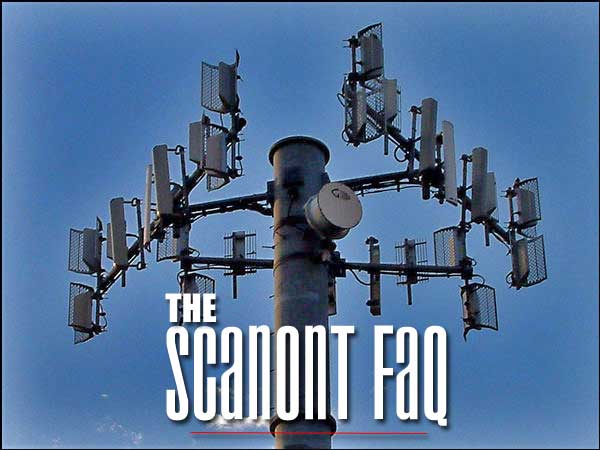
The official ScanOnt FAQ V1.1
Last updated May 3rd 2005
Compiled by:
Bill Blyleven
Bryan Passifiume
Contributors:
Trevor Something, Bob Heuman, Terry Green, Steve Jones, Simon Martin, Dave Archer, Andrew Porrett, Mike Iszak

The
official ScanOnt FAQ V1.1
Last
updated May 3rd 2005
Compiled by:
Bill
Blyleven
Bryan Passifiume
Contributors:
Trevor
Something, Bob Heuman, Terry Green, Steve Jones, Simon Martin, Dave
Archer, Andrew Porrett, Mike Iszak
PREFACE:
This document was
created in assist the users of the ScanOnt yahoogroup in answering
frequently asked questions, not only to help the users and scanner
users in general, but to keep the same questions from being asked on
the list constantly.
This has been designed as a constantly
evolving document. If you have any additions, suggestions or
corrections, please let us know. Scanont is Ontario's first and best
Scanner resource and mailing list, and we want to make sure that it
has the best FAQ available to it's members. Many people try to
duplicate Scanont, but none come close.
Here's what you won't
find in this FAQ:
Instructions on how to program your scanner - This would make this FAQ huge, and there are already several resources to that end on the net.
Frequencies - Again, there are tons of much better resources on the net that would do a much better job at giving you what you're looking for than we could ever duplicate here in this humble FAQ. Check out RadioReference.
Reviews of models/software/etc. - Again, duplication. Look at sites such as StrongSignals for stuff like that.
If you have any additions or corrections to this
FAQ, please send them to [email protected].
Thanks for reading, and keep on scanning!!

Contents:
SECTION 1: THE BASICS
1.1
.......... What is a scanner?
1.2 ..........What is a
repeater?
1.3 ..........What is Simplex?
1.4 ..........What is
Talkaround?
1.5 .......... Legal questions regarding scanning
1.6
.......... Can I stream my scanner on the internet?
1.7
........... Where can I get information on my city's radio
frequencies?
SECTION 2:
TRUNKING
2.1 ..........What is Trunking?
2.2
...........What is a Talkgroup?
2.3 ..........Motorola
Trunking
2.3.1 .....................Type I and Type II
systems
2.3.2 .....................Status Bits
2.3.3
.....................Patching
2.3.4
......................MSEL
2.3.5.......................SmartZone
2.4
..........iDen
2.5 ..........EDACS
2.6 ..........LTR
2.7
..........MPT-1327
2.8 ..........Control Channels
2.9
..........I-Calls
2.10 ..........What is a
tower?
2.11.............Control Channel trunking
SECTION
3: DIGITAL
3.1 ..........What is Digital?
3.2
.......... Do I need a digital scanner?
3.3 .......... Do I need a
license to buy and use a digital scanner?
3.4 ..........What
scanners can handle digital?
3.5 ..........What is
PROVOICE?
3.6............What is AEGIS
SECTION
4: FLEETNET
4.1 .......... What is Fleetnet?
4.2
.......... Who is on Fleetnet?
4.3 .......... How do I program my
scanner to receive Fleetnet?
4.4 .......... What scanners can
handle digital?
4.5 .......... What scanners can listen to the
analog Fleetnet talkgroups?
SECTION 5: MISCELLANEOUS
INFO
5.1 ..........Encryption
5.2
..........Signalling
Formats
5.2.1.........QuickCall
5.2.2.........MDC-1200
5.2.3.........GE-STAR
5.2.4.........DTMF
5.2.5.........MODAT
5.3............CTCSS
5.4............
Data Slicers
5.5.............Trunker/ETrunk
5.6.............Popular
Acronyms
APPENDIX
A1.............CNI
Quick response codes
A2.............Common 10
codes
A3..............NATO Phonetic
Alphabet
A4..............Popular Acronyms
1.1 - What is a Scanner?
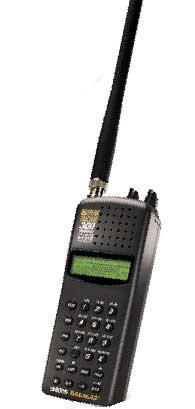 A
scanner is a radio receiver capable of receiving signals outside of
the regular AM and FM radio band, allow these signals to be
programmed to a bank of memory locations, and to rapidly 'scan' them,
stopping on channels with open carriers. The ability to 'scan' is a
defining characteristic of a scanner. Some shortwave and amateur
radios are able to receive frequencies that scanners are able to pick
up, but they would not be considered "scanners".
A
scanner is a radio receiver capable of receiving signals outside of
the regular AM and FM radio band, allow these signals to be
programmed to a bank of memory locations, and to rapidly 'scan' them,
stopping on channels with open carriers. The ability to 'scan' is a
defining characteristic of a scanner. Some shortwave and amateur
radios are able to receive frequencies that scanners are able to pick
up, but they would not be considered "scanners".
Modern
Scanners can be grouped into three main categories:
Conventional - Able to receive analog, modulated signals broadcast over conventional airwaves in a variety of bands
TrunkTrackers - Able to monitor and follow conversations on Trunked Radio systems.
Digital - Able to monitor signals transmitted using the APCO P25 Digital standard.
Of these, scanners come in three main configurations:
Portable - Battery operated, these handheld units can clip onto your belt.
Mobile/Base - Can be installed in a car or sit on your table at home. These typically only operate from an external power source, such as wall current or your car's electrical system.
Computer - Controlled by a desktop or laptop PC. These scanners are not as portable, but offer a memory capacity limited only by the available space on your hard drive.
Also note that many modern scanners can be programmed and/or controlled by a computer.
1.2 - What is a Repeater?
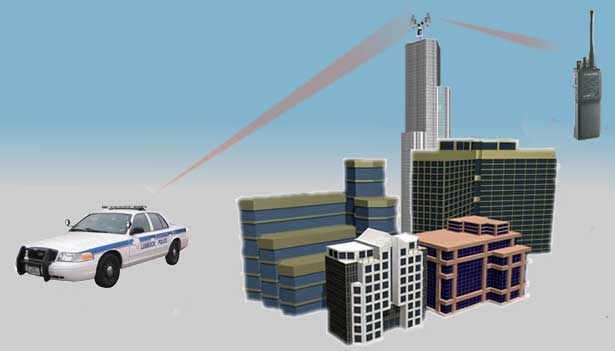 A
repeater is a device that extends the range of mobile and portable
radios. A repeater consists of a dedicated high-power radio unit that
receives transmissions on its input frequency and simultaneously
re-transmits them on its output frequency. Most repeaters have a set,
band-dependant channel spacing (all repeaters on a particular band
will have their input and output frequencies separated by the same
amount, known as a REPEATER OFFSET). Ham radio makes use of repeaters
quite frequently, as do most commercial radio users. For very obvious
reasons, scanner users need only worry about monitoring a repeater’s
output or tx frequency.
A
repeater is a device that extends the range of mobile and portable
radios. A repeater consists of a dedicated high-power radio unit that
receives transmissions on its input frequency and simultaneously
re-transmits them on its output frequency. Most repeaters have a set,
band-dependant channel spacing (all repeaters on a particular band
will have their input and output frequencies separated by the same
amount, known as a REPEATER OFFSET). Ham radio makes use of repeaters
quite frequently, as do most commercial radio users. For very obvious
reasons, scanner users need only worry about monitoring a repeater’s
output or tx frequency.
1.3 - What is Simplex?
Simplex is the basic operation of a two way radio – any number of people talking on radios that operate on the same frequency for transmit and receive. Radios set up for duplex or repeater operation have different frequencies programmed for it’s transmit and receive, transmitting to the repeater’s input, and receiving on the repeater’s output. Many police and fire agencies with trunked radio systems have simplex channels for emergency failsafe, surveillance operations or special events.
1.4 - What is Talkaround?
Used
often in ham radio or public safety systems, most two-way radios have
a TALKAROUND function. Talkaround is the function of transmitting and
receiving only on a repeater’s output frequency, to avoid
conversations from being transmitted over the repeater. This is used
either for non-important conversations with nearby units, or for
communicating with a nearby party without needlessly tying up the
repeater. As talkaround conversations are not sent through a
repeater, you must be rather close to listen to the
conversation.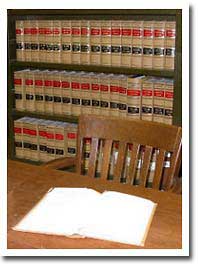
1.5
- Legal concerns regarding scanning
Coming soon
1.6 - Legal issues regarding streaming your scanner on the internet
Coming Soon
1.7 - Where can I get information on my city's
radio systems?
The absolute best resource is
http://www.radioreference.com.
You need to sign up for an account to access the radio frequency and
trunked radio listings, but it will allow you access to the entire
database and the often entertaining RR forums. Access is free.
Radio
Reference used to be www.trunkedradio.net.

2.1
- What is Trunking?
Trunking
is a computerized method of allowing a large number of
people/agencies to use a relatively small amount of actual
frequencies. This is accomplished by a computer that controls all of
the radios on the system, informing them of what frequency to operate
on. Radios are programmed with specific talkgroups (channels) that
the user can either listen to or talk on. The frequency for each
talkgroup changes every time someone keys their radio to speak. The
term “trunking” comes from the telephone industry, as the
method of selecting the next available ‘circuit’ between
exchanges is very similar to what happens in a ‘trunked’
radio system. A TrunkTracking scanner will listen to the system's
control channel and follow frequency changes for whatever talkgroup
you are listening to.A conventional scanner can monitor a trunked
radio system, but it would not be able to track frequency changes.
Conversations would make no sense, as you would be be only hearing
parts of conversations across the entire system.
2.2 - What is a Talkgroup?
A
talkgroup is analogous to a radio channel in a trunked radio system.
The trunk controller for the system will, when a radio’s PTT is
pressed, assign a free frequency for the radio to transmit on and
order all radios on that talkgroup to switch to that frequency.
Frequencies assigned will change every time someone talks into their
radio. A TrunkTracking scanner will listen to the system's control
channel and follow frequency changes for whatever talkgroup you are
listening to.
2.3 - Motorola Trunking
Motorola trunking is the most popular trunking system in North America. Motorola trunking systems can be found in the VHF, UHF , 800 and 900 MHz bands (systems in the 700 Mhz band are planned for the future). There are two main types of Motorola trunked radio systems: Type I and Type II. Type I is archaic and is rarely used. Motorola trunked radio systems support both analog and digital voice transmissions.
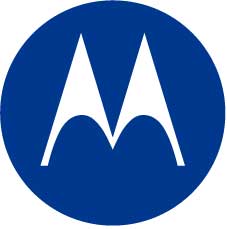
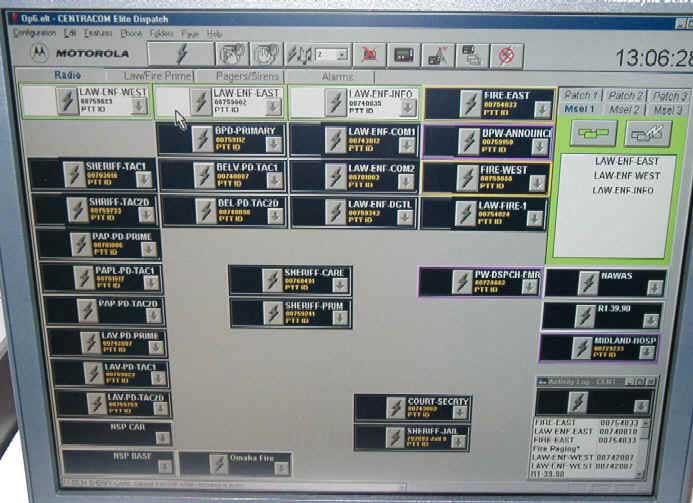 divisions are permanently patched). Dispatchers can also patch in
non-trunked channels, such as the OFM channel, dispatch paging
frequencies, I-TAC channels, mutual aid frequencies, etc.
Helicopters are often connected to trunked radio systems via a
patched simplex frequency, as transmissions from great heights are
not authorized on trunked repeater inputs. Transmitting from the
height of an operating helicopter enters the risk of interfering
with distant systems that might be operating on the same
frequencies. Mike Iszak writes: "The
York Regional Police helicopter doesn't use a simplex channel,
it
divisions are permanently patched). Dispatchers can also patch in
non-trunked channels, such as the OFM channel, dispatch paging
frequencies, I-TAC channels, mutual aid frequencies, etc.
Helicopters are often connected to trunked radio systems via a
patched simplex frequency, as transmissions from great heights are
not authorized on trunked repeater inputs. Transmitting from the
height of an operating helicopter enters the risk of interfering
with distant systems that might be operating on the same
frequencies. Mike Iszak writes: "The
York Regional Police helicopter doesn't use a simplex channel,
it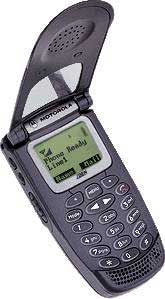 ite"
ite"
2.4 - What is iDEN?
iDEN is a trunked, digital radio system, most commonly found as the PTT/Direct Connect service of the Telus Mike and Nextel systems. Used mainly by businesses as a hassle-free and low-cost radio dispatch solution, it is used by a handful of police services as their primary radio system (Durham Regional Police, for example use radios on the Telus Mike system). iDEN cannot be monitored with a scanner. A large 900 MHz iDEN system is used by non-public safety workers at Pearson Airport.
2.5 - What is EDACS?
EDACS
(Enhanced Digital Access Communications
System) is a type of trunking system developed by
GE/Ericson/Tyco-MA/com respectively. Characteristics of EDACS are:
Every time a radio transmits it is on a different frequency.
There are typically 3 beeps after each transmission if you listen without a TrunkTracker
All frequencies must be entered into your scanner in a specific order, called the LCN (logical Channel Numbering)
There are three types of EDACS systems: Narrow, Wide and SCAT (Single Channel Autonomus Trunking)
EDACS systems can be found in UHF, 800 and 900 MHz bands
Data, such as AVL telemetry, can be transmitted along side voice transmissions
The Toronto EMS radio system, as well as Halton Regional Police, use 800 Mhz EDACS systems.
2.6 - What is LTR trunking?
Logic Trunked Radio – Developed by EF Johnson/Transcrypt, it’s a somewhat popular trunking format that doesn’t rely on a specific control channel – all channels are used for voice and data transmissions. LTR is not APCO compliant due to lack of an emergency/man down function and no RID (Radio ID) feature (no way to uniquely identify an individual radio), and therefore is not normally used for public safety agencies (there are some exceptions, though).
2.7 - What is MPT-1327/MPT-1343
 A
trunking system used primarily in Europe (MPT was developed by the
British Ministry of Post and Telecommunications).
It is a popular, open protocol trunked radio system that supports
analog voice communications. MPT 1327/1343 does not have a separate
control channel. The TTC uses MPT-1327 for their subway radio
network. MPT-1327/1343 systems cannot be tracked with any known
scanner model. MPT-1327/1343 systems can be tracked using the
TrunkSniffer or FTrunk
programs.
A
trunking system used primarily in Europe (MPT was developed by the
British Ministry of Post and Telecommunications).
It is a popular, open protocol trunked radio system that supports
analog voice communications. MPT 1327/1343 does not have a separate
control channel. The TTC uses MPT-1327 for their subway radio
network. MPT-1327/1343 systems cannot be tracked with any known
scanner model. MPT-1327/1343 systems can be tracked using the
TrunkSniffer or FTrunk
programs.
2.8 - What is a Control Channel?
A Control channel is a digital stream of data that all radios on a
trunked radio system monitor. Control channels inform radios what
frequencies to use for certain talkgroups, data transmissions, status
indications, emergency notifications, etc.
For sound samples
of what control channels of specific radio systems sound like:
EDACS
9600 baud: http://www.kb9ukd.com/digital/edacs96.wav
Motorola
Type II: http://www.kb9ukd.com/digital/motorola2.wav
MPT1327:
http://www.kb9ukd.com/digital/mpt_1327.wav
2.9 - What are I-Calls?
An I-call is a conversation that takes place between two specific radios outside of their specific talk group. Many scanners do not monitor/track I-calls.
2.10 - What is a Tower?
A
tower is a structure for holding the antennas for that specific
trunking site. It could be the top of a building or an actual steel
frame tower in the middle of nowhere. It is also a term for a
separate ‘system’ or node of a Smartzone radio system
(Fleetnet, Toronto Trunk, etc.) In order to monitor a SmartZone radio
system, you need to enter in each ‘tower’ into your
scanner as if it were a separate Type II radio system. The term
“tower” is also used in railway radio. “Keying the
tower” is a term used by train and MoW crews to page the
dispatcher.
2.11 - What is Control Channel
trunking?
Control Channel trunking is when only the
control channel of the trunking system is used to follow
conversations on the system. Most scanners available have this
feature. Base offset and spacing is needed for UHF and VHF systems as
they do not follow a preset plan for channels like 800 and 900 MHz
systems.
3.1 - What is Digital? Digital
radio is increasingly becoming popular among public safety agencies.
Voice radio is modulated into a digital radio signal and is
transmitted over the air.
Digital
radio is increasingly becoming popular among public safety agencies.
Voice radio is modulated into a digital radio signal and is
transmitted over the air.
Radio spectrum is a natural resource
that has become quite clogged as it's so popular. As such, narrowband
requirements have been introduced into the commercial spectrum to
make more room for others users. Digital radio allows more efficient
use of bandwidth of the spectrum. Not to mention, digital radio
sounds excellent to the end-users and uses very little bandwidth
in
comparison to analog to do so.
It is comprised of 2
parts:
Over the air protocol (i.e. how to shuffle the chunks of digital “voice”)
The CODEC which is the actual the format of the digitized voice
The standard codec for interoperabliity is Project 25
digital, as determined by APCO (Association of Public Safety
Communications Officials). The use of P25 digital ensures
interoperability across radio brands. A P25 radio from Vertex
Standard will be able to communicate with a P25 radio from
Motorola.
Motorola currently has two types of digital radio
formats: VSELP and IMBE. VSELP is a first generation codec, and is
seldom used these days (Peel Regional Police use VSELP for their
“encrypted” channels). IMBE is P25 compliant, and is the
format that the OPP use on Fleetnet. VSELP is not P25 compliant, and
cannot be monitored with a digital scanner.
DIGITAL can be a
used on either a single channel (i.e. Niagara Regional Police) or in
a trunked system (i.e OPP in southern Ontario). Digital is not
Encryption (see below); it is a type of modulation.
All
digital scanners are P25 compliant, and can only decode P25 digital
transmissions.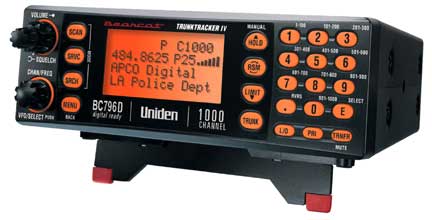 3.2
- Do I need a Digital scanner?
3.2
- Do I need a Digital scanner?
It depends on what
you want to listen to. If you want to listen to the OPP, you will
need one. The OPP currently operate on digital talkgroups on
Fleetnet. There are also other local agencies that operate digital
radio systems (Barrie Fire, for example). Check
http://www.radioreference.com for information on your local radio
system. Unless you just have to have the latest toy or gadget,
there’s no real reason to spend the money for a digital scanner
unless you need one.
3.3 - Do I need a license
to buy and/or use a digital scanner?
No you do
not. A circular was released by Industry Canada close to seven
years ago claiming that a “Digital Scanner License” was
required to use or purchase a digital scanner, and further noted that
they would only be issued to Emergency Workers and Amateur Radio
operators. To this date there has been no official mandate from IC
regarding the need to obtain a license. As well, no applicaiton form
exists for such a license, as well as no law or mandate requiring any
special certification to purchase a digital scanner. A certain north
Toronto amateur radio store with a reputation for terrible customer
service has, on occasion, refused sale of digital scanners to those
without a ham radio license. This is their own policy as opposed to a
mandate from IC. This particular store has a bad habit of treating
non-amateur radio scanner customers as second-class citizens, so it's
not all that surprising such a policy exists. Purchasing them in the
US is a cheaper alternative, and there are no regulations forbidding
the importation of such devices into Canada. This subject is a point
of much contention on Scanont.
in response to this entry,
Andrew Porrett writes: "IC *did*
hassle many digital scanner retailers in the GTA back when the first
digital Uniden scanner (BC250) was introduced. This action was
triggered by complaints from the OPP. Radioworld did not make
up this policy - they're just covering their ass. However, if
other retailers have figured out how to make peace with IC (e.g. sell
digital scanners to non-hams), RW should pull its head out of its ass
and get with the program."
3.4
- What scanners can "go digital"?
BC250
Handheld, 1000ch, 10 banks, follows OPP with additional card. $275U
to $375U card is $250U
BC296 Handheld, 1000ch, 10 banks, follows
OPP with built in card $519U $800C
BC785 Base/DIN, 1000ch, 10
banks, follows OPP with additional card $299U card is $250U
BC796
Base/DIN, 1000ch, 10 banks, follows OPP with built in card $519U
$800C
Pro 96 Handheld, 500ch, 10 banks. $375U to $475U used $499U
new RadioShack USA
Pro 2096 DIN, 500ch, 10 banks. $499U new
RadioShack USA
3.5 - What is PROVOICE?
MA/COM
PROVOICE is the current digital format that is pushed by MA/COM. It's
prominently used on EDACS systems, but can be used on conventional
simplex as well. The format is quite similar to IMBE, but differs
with some features such as error correction. Despite rumors, MA/COM
has stated numerous time it would never license their proprietary
codec to scanner vendors. This means, there most likely will not be a
scanner introduced that allows you monitor such transmissions. Mike
Iszak writes: "ProVoice is
aparantly P25 compliant, but doesn't use the Common Air Interface
(CAI), so you cannot monitor it with a digital scanner."
3.6
- What is AEGIS
This digital format was the second
generation digital voice developed by GE/Ericsson. It's since been
replaced by ProVoice. AEGIS transmissions cannot be monitored with a
scanner, however, the good news is - few agencies still use AEGIS.
AEGIS is not P25 compliant.
4.1 - What is Fleetnet?
Bell
Fleetnet/GMCP/BMR refers to the province-wide Government of Ontario
radio system that will eventually span about 80%
of the province.
Currently (as of spring 2005) all of southern Ontario and most of
eastern Ontario is using this systems. Fleetnet is a Motorola
SmartZone Type II wide-area mixed-mode trunked radio system. Fleetnet
is made up of two ‘zones’ – Zone 1 encompasses all
of Southwestern Ontario and consists of over 40 towers, and Zone 2
consists of all of Eastern Ontario. Fleetnet is operated by Bell
Mobility Radio (a separate division of Bell Mobility cellular –
their networks are NOT related)
4.2 -
Who is on Fleetnet?
The primary user
of Fleetnet is the Ontario Provincial Police, who operate on
unencrypted IMBE digital talkgroups (you need a digital scanner to
monitor them). Current and/or future users of Fleetnet consist of:
Ontario Provincial Police
Ministry of Health (Ambulance Dispatch and Hospital Patches
Ministry of Natural Resources
Ministry of Transportation
Certain Municipal public safety agencies (the City of Guelph, for example)
Ministry of Corrections
4.3 - How do I program my scanner for
Fleetnet?
Visit Mike Oxlong's
excellent tutorial on programming the BC-780, BC-785, BC-250D,
BC-296D on RadioReference.com at:
http://www.radioreference.com/modules.php?name=Forums&file=viewtopic&t=8179
4.4 - What scanners can do digital?
BC250:
Handheld, 1000ch, 10 banks, follows OPP with additional card. $275U
to $375U card is $250U
BC296: Handheld, 1000ch, 10 banks,
follows OPP with built in card $519U $800C
BC785: Base/DIN,
1000ch, 10 banks, follows OPP with additional card $299U card is
$250U
BC796: Base/DIN, 1000ch, 10 banks, follows OPP with
built in card $519U $800C
Pro 96: Handheld, 500ch, 10
banks. $375U to $475U used $499U new RadioShack USA
Pro 2096:
DIN, 500ch, 10 banks. $499U new RadioShack USA
4.5
- What scanners can do the analog Fleetnet talkgroups?
Pro
92 + Pro2067: Only used
Pro 94: New on closeout
RadioShack USA spring 2005
BC245: Used, some available new
but overpriced.
BC246T: New state of the art
Pro 97:
New but has limitations on Fleetnet
Pro 2051: New
BCT
8: New
Pro 2052: New on closeout RadioShack USA spring
2005
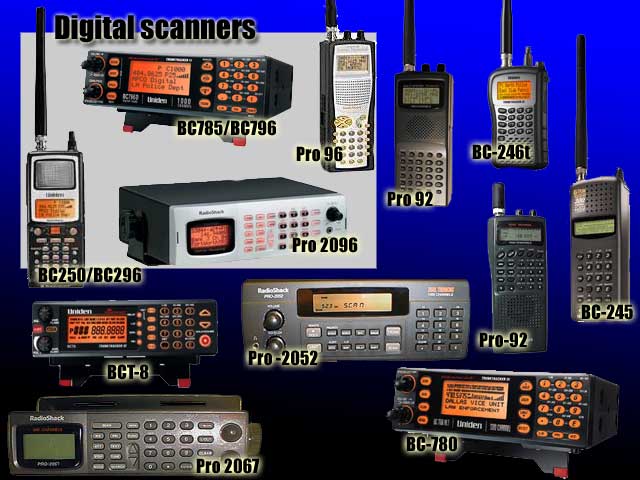
5.1 - Encryption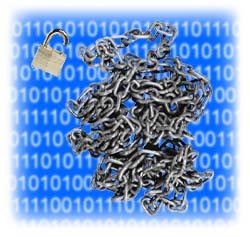 Encrypted
transmissions, unfortunately, are becoming more popular as privacy
and security concerns are entering the forefront. Encryption can
range from simple voice inversion (making voices on the system sound
like Donald Duck) to more sophisticated encryption algorithms
employing encryption keys.
Encrypted
transmissions, unfortunately, are becoming more popular as privacy
and security concerns are entering the forefront. Encryption can
range from simple voice inversion (making voices on the system sound
like Donald Duck) to more sophisticated encryption algorithms
employing encryption keys.
Digital encryption schemes have
been around for many years. Motorola’s Securenet system
consists of five unique (and non-compatible) protocols: DVP,
DVP-XL, DES, DES-XL and DVI-XL.
DVP/DVP-XL:
Digital Voice Privacy was developed in the 1970’s by Motorola
as a proprietary encryption protocol, meant mainly for non-sensitive
non-classified users who wanted to eliminate eavesdropping. DVP-XL
was developed to address concerns of decreased range when encryption
was in use. 2.36x1021 encryption keys are possible with
DVP.
DES/DES-XL: Data
Encryption Standard was developed in the mid 1970’s a strictly
government-only encryption protocol, used as a common standard among
US Government agencies for sensitive (but not classified)
communications. DES uses 7.2x 1016 possible encryption key
combinations. A P25 compliant digital encoding standard is
DES-OFB.
DVI-XL: This
format is an export-version of DES.
For top secret
communications (such as Secret Service operations), an encryption key
known as FASCINATOR is
used. Details of the FASCINATOR
algorithm is highly classified.
Monitoring of voice inversion
is easy with the correct equipment. Monitoring of digital encryption
is impossible, as it not only requires a radio with the proper
encryption module, but it needs to be loaded with the proper
key.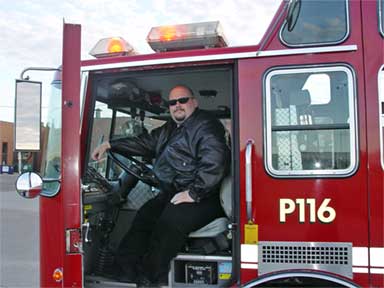 5.2
- Signalling Formats
5.2
- Signalling Formats
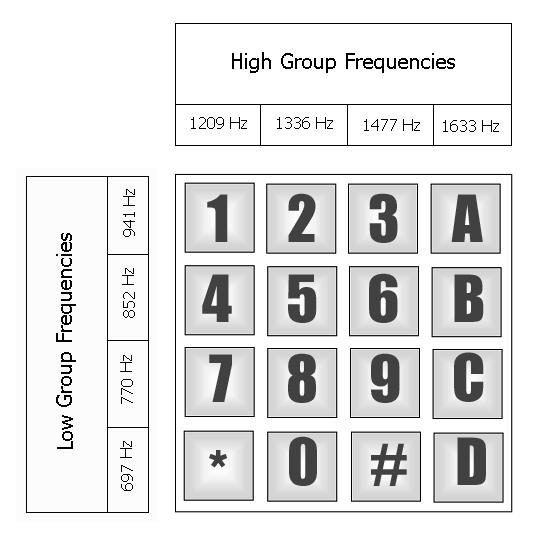 5.2.4
- DTMF
5.2.4
- DTMF
5.3 - CTCSS
Continuous
Tone Coded Squelch System (also known as
PL Tones, Tone Squelch or Privacy tones). CTCSS is a sub-audible tone
that is transmitted with voice transmissions. Only radios set with
the correct tone can receive signals transmitted with CTCSS. CTCSS is
used to eliminate unwanted traffic or noise from the channel. CTCSS
tones are also used to limit repeater access, so only authorized
radios can access a repeater. This is used so repeaters don’t
end up retransmitting noise (intermod) or spurious signals.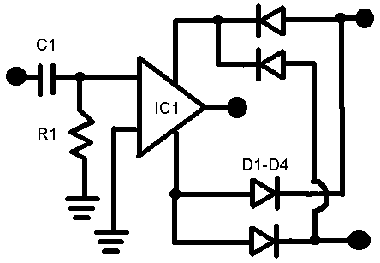 5.4
- What is a Data Slicer?
5.4
- What is a Data Slicer?
A slicer is a simple
electronic circuit that can take base audio from a scanner (usually
through it’s discriminator tap) and modulates it into a signal
a computer can interpret and use through it’s serial port.
Programs like Trunker use Data Slicers to monitor a trunked radio
system’s control channel. Programs can also decode POCSAG and
FLEX pager signals received via a data slicer and display it’s
data.
5.5 - What is “TRUNKER” and
ETrunk?
TRUNKER is a DOS based program that
can log data from a Motorola trunking system. Trunker connects to a
scanner locked on a system's control channel interfaced with a data
slicer. It is also possible to control a second (computer
controllable) scanner to follow voice traffic on the system, allowing
one to monitor a trunked radio system without the need of a
TrunkTracking scanner.
ETRUNK is similar to TRUNKER,
but works with EDACS systems.
5.6 - What is refarming?
Due to
interference caused by cellular phone companies operating alongside
public safety organizations in the 800 Mhz and 900 Mhz band, certain
users will have to relocate. This only affects users in the USA. This
is a concern because some scanners on the market cannot scan the new
frequencies when in Trunk mode. This is also called REBANDING. 5.7
Can I listen to cell phones on my scanner?
5.7
Can I listen to cell phones on my scanner?
It
depends on the scanner. US law forbids sale or use of any scanner
that can receive analog cell phone conversations. In Canada there is
no such law, but most of the scanners on the market are manufactured
for the US market. Some manufacturers have both US and EXPORT
versions of their scanners, which are able to receive the 800 MHz
analog cell phone band. However, the increasing popularity of digital
cell phones have made older analog cell phones all but obsolete.
There's very little cell phone activity to listen to these days, and
the newer digital cell phones cannot be monitored with a
scanner.
APPENDIX
A1
- What are the CNI quick response codes?
CNI
codes are a summary of a person's history with police. A person
could have no outstanding warrants etc but the CNI will "flag"
the office of the subjest's history and potential and so the officer
can be better preparared/informed.
Flag
Alpha: Person considered armed and
dangerous
Flag Echo: Person
escaped custody
Flag Mike:
Person considered missing
Flag Sierra:
Person missing
Flag
Victor: Person violent
A2
- What are some common 10-codes?
"Not
all police agaencies in Ontario share the same code system. The
OPP uses a common one that many American agencies use. Othetr
regional agencies uses codes that do not correspond with others. I
used to be a dispatcher for the OPP for 12 years (1990-2002),
and we ran into this when we talked to other dispatchers or officers
on OPC common. Actually the OPC policy was to use common
language on OPC common to prevent confusion. You'd think it
would be the same but each agency does its own thing"
(submission by Dave Archer)
10-1 Receiving poorly
10-2 Receiving well
10-3
Stop transmitting on this channel until further notice
10-4 I
rather enjoy Hamsexy.com
10-5 Relay message
10-6 Busy - stand
by
10-7 Out of service
10-8 In service
10-9 Repeat
message
10-10 Switch to common channel
10-11 Dispatched too
rapidly
10-12 Officials present
10-13 Existing conditions
10-14
Escort
10-15 Message delivered
10-16 Pick up prisoner
10-17
Go to ______
10-18 Complete assignment
10-19 Return to
station
10-20 What is your location?
10-21 Call by
telephone
10-22 Disregard
10-23 Stand by
10-24 Assignment
completed
10-25 Contact
10-26 Detain subject
10-27 Driver's
license check
10-28 Vehicle registration check
10-29 Wants and
warrant check
10-30 Improper use of radio
10-31 Pick up
10-32
Units needed
10-33 Emergency (either a VERBAL 10-33, or emergency
button pressed on radio)
10-34 Time check
10-35 Major
alert
10-36 Correct time
10-37 Drunk
10-38 Investigation
alert
10-40 Advise if available
10-42 Not according to
regulations
10-45 Fatality
10-46 Holding suspect
10-47
Ambulance needed
10-50 Subject negative
10-51 Tow truck
needed
10-60 Subject negative
10-61 Subject has record - not
wanted
10-62 Subject possibly wanted
10-63 Subject wanted
10-64
Proceed with caution
10-65 Assist with 10-64
10-66 Subject in
observation category
10-67 Subject in parolee category
10-68
Subject in charged category
10-69 Can you respond?
10-70
Subject in prohibition category
10-70 Division-wide announcement
(Peel Regional Police)
10-71 Subject in refused category
10-72
Subject in prohibited category
10-73 1. Subject in elopee
category
2. Back up officer on a call (Peel Regional Police)
10-74
Subject missing
10-75 Subject in pointer category
10-78 Officer
needs assistance
10-90 Burglar Alarm
10-92 Person in
custody
10-93 Road block
10-100 Bomb threat
10-200 The
Police (Used by Ambulance, also shortened to "200")
10-2000
Police needed urgently (Used by Ambulance)
A3
- NATO Phonetic
Alphabet
Alpha
Bravo
Charlie
Delta
Echo
Foxtrot
Golf
Hotel
India
Juliet
Kilo
Lima
Mike
November
Oscar
Papa
Quebec
Romeo
Sierra
Tango
Uniform
Victor
Whiskey
X-Ray
Yankee
Zulu
A4
- Popular Acronyms
-A-
APCO - Association of Public safety Communications
Officers
AMBE - Advanced Multi-Band Excitation, a digital voice
codec
ALS - Advanced Life Support, an advanced paramedic with
special training
AVL - Automatic Vehicle Locator, GPS-based
vehicle location system. Toronto EMS use AVL to track their
vehicles
-B-
BFEM - Brampton Fire & Emergency
Services
BLS - Basic Life Support, a paramedic
-C-
CAD
- Computer Aided Dispatch
CB - Citizen's Band, a AM 27 MHz radio
service
CTCSS - Continuous Tone Controlled/Coded Squelch
System
CACC - Central Ambulance Communications Centre, dispatch
centre for ambulance services
CNI - Crimial Name Index, a search
method of CPIC that returns only the existence of someone's criminal
record.
CPIC - Canadian Police Information Centre, an RCMP-run
computer network of crimes and criminals (link)
CIB
- Criminal Investigation Bureau. PRP-based agency
CRC - Collision
Reporting Centre
COR - Community Oriented Response Unit (Toronto
Police)
CTAS - Canadian Triage and Acuity Scale
CAI - Common
Air Interface
-D-
DES - Digital Encryption Standard,
a voice radio encryption protocol
DVP - Digital Voice Privacy, a
voice radio encryption protocol
-E-
EDACS - Enhanced
Digital Access Communications System
EDP - Emotionally Disturbed
Person. see: MHA
ETF - Emergency Task Force (Toronto Police)
ERU
- Emergency Response Unit, Peel Police patrol officers that respond
to priority calls. Use RESPONSE callsign on the radio
-F-
FRS
- Family Radio Service, a low power UHF license free radio
service
FAC - Firearms Aquisition Certificate
FIS - Toronto
Police forensics unit
-G-
GMRS - General Mobile
Radio Service, a low power UHF license free radio service
GPS -
Global Positioning System
GOA - Gone on Arrival
-H-
HBD
- Has Been Drinking, term for someone obviously intoxicated.
HBD -
Hot Box Detector, common wayside railway devices used to detect
overheated wheel bearings
HRPD - Halton Regional Police
Department
-I-
IMBE - Improved Multi-Band
Excitation, P25 standard digital speech modulation and compression
codec
IDENT - Forensics unit
-L-
LOC - Level of
Consciousness
-M-
MVC - Motor Vehicle Collision
MOH
- Ministry of Health
MNR - Ministry of Natural Resources
MFD -
Mississauga Fire Department
MDT - Mobile Data Terminal, in-car
computer terminal used by police and other agencies
MWS - Mobile
Work Station, in-car laptops used by Toronto Police
MHA - Mental
Health Act... used as a verb to describe someone who might fall under
the Mental Health Act. See: EDP
-N-
NCIC - National
Crime Information Centre
-O-
OPP - Ontario
Provincial Police
-P-
PL - Private Line tone, a
proprietary Motorola term for CTCSS
P25 - Project 25, APCO's
digital radio interoperabliity project
PRP - Peel Regional
Police
PD - Property Damage, a fender bender type minor
accident
PI - Personal Injury, an accident with injuries
-R-
RTC
- Rail Traffic Controller, railway dispatcher and network
controller
ROPE - Repeat Offender Parole Enforcement squad
RBU
- Regional Breathalizer Unit, the Peel Regional Police unit
responible for spotchecks and radar
-S-
SOCO - Scene
Of Crime Officer, a specially-trained forensics collection officer on
the Toronto Police force
SIU - Special Invesigations Unit,
investigation team that probes crimes involving police officers or
deaths caused by police activity
-T-
TPS - Toronto
Police Service
TFS - Toronto Fire Service
TAC - Peel Regional
Police Tactical unit
TSU - Traffic Services Unit (Toronto
Police)
-V-
VSELP - Vector Sum Excited Linear
Prediction, an early Motorola digital codec
VSA - Vital Signs
Absent
-Y-
YO - Young Offender
YOA - Young
Offender's Act (archaic)
Revision
History:
Version 1.0:
Initial release
Version 1.01:
Added user-submitted Smartzone scanning trick
Corrected CNI flag section in appendix
Added disclaimer in 10-codes section
Version 1.1
Reformatted user-submitted tips in bold blue.
Corrected spelling
Corrected various terms
Corrected helicopter use of trunked radio systems
Corrected wrong translation of CTCSS acronym
Added CAI and CTAS to the acronym list